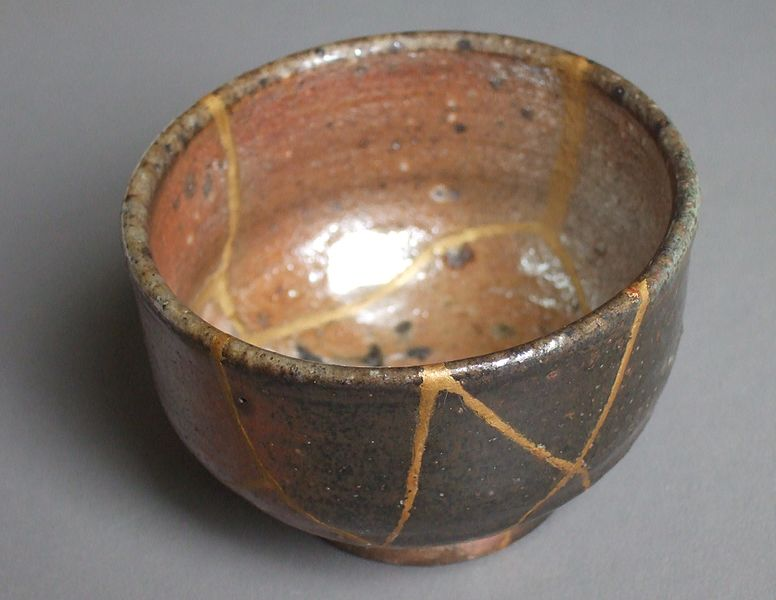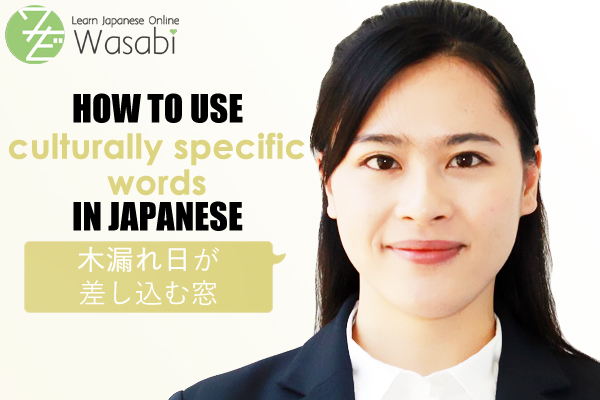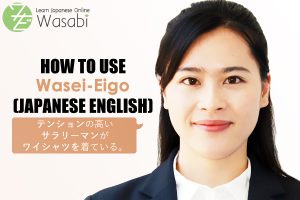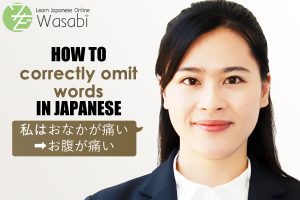Learn Three Japanese Words with No English Translation
Welcome back to our “Video & Article” series with tutor Miki. In this article and video we will take a look at three Japanese terms that are so specific to the Japanese culture that there is no way to translate them directly into English. Learning about these terms and their background will provide you with a deeper understanding of the Japanese culture, and allow you to surprise your Japanese friends and colleagues with some difficult words!
| Table of Contents [Introduction] [木漏れ日] [木枯らし] [わび・さび] |
[Introduction]
Every language expresses its own way of viewing the world. Japanese culture for example has a close connection to nature. Besides paying close attention to each season, Japanese language has unique ways of describing nature. For example in spring, when cherry blossoms bloom covering whole streets with their fallen petals, the trees paint the sky bright pink and white. For this phenomenon, we use the word “満開”.
This one word describes the “state of fully opened and bloomed flower buds”.
In today’s lesson, we will take a look at three Japanese terms that cannot be translated directly into English and which are distinctive for Japanese culture.
[adsense]
[木漏れ日]
The first time we will look at is called “木漏れ日” in Japanese. “Komorebi” can be translated to: “Sunshine filtering through trees”. It is combined of the following components:
木 (Tree)
漏れ (leaking, coming through)
日 (Sun, sunlight)
= Sunlight “leaking” through trees.
Komorebi indicates the sunlight coming through forest trees.
For example:
木漏れ日が差し込む窓
A window pane where sunlight leaks through trees
[木枯らし]
“木枯らし”, read “Kogarashi”, refers to the type of strong and cold wind that comes between the end of fall and the beginning of winter.
木 (Tree)
枯らし (Drying out, killing vegetation)
Just like “Komorebi”, “Kogarashi” combines different Chinese characters and Japanese words to create a very special meaning.
The trees (木) are dried out and wilt away (). The trees are dried out and wilt away because of the cold, strong and dry wind that blows at the end of fall and beginning of winter.
For example:
木枯らし一号が吹いた
The first Kogarashi has blown this year (this indicates the coming of the winter season)
[わび・さび]
“わび・さび” or “Wabi/Sabi” refers to the concept of beauty in transience, impermanence and imperfection.
Let’s break the term down and look at the origins of the two words.
わびー侘しい
(miserable, wretched, lonely)
さびー寂しい
(lonely, lonesome)
“Sabi” refers to the aesthetic in old or decayed appearance, e.g. an antique look. The concept accepts that everything in this world will eventually decay and disappear. Many people simply think of decaying, aging and things breaking eventually as the default, but the concept of Sabi sees those changes in a positive light. Sabi means embracing the unique beauty that can only come to be through transience, impermanence and imperfection.
Incidentally, Sabi shares its pronunciation with “錆”, which means rust.
“Wabi” is the mindset of acceptance. If combined with Sabi, Wabi allows the mindset of accepting imperfection and recognising the beauty in Sabi becomes possible.
“侘び住まい” (Wabizumai) for example refers to a small cozy living space which is enjoyable without any luxury items.
Traditional Japanese gardens are usually designed with the underlying concept of Wabi and Sabi. They are meant to be imperfect, simple, and change is seen as a natural cycle of growth and decay.
Another example is this Matcha cup:

This cup had been broken, but it was fixed with gold to stick the broken parts back together, underlying the beauty in the broken parts of the cup. This technique is called “金継ぎ” (Kintsugi).
In addition to Japanese gardens or traditional Matcha cups, there are many modern applications of Wabi and Sabi in daily life expressions. It could be said that some Japanese people’s love for vintage stores is an expression of Wabi-Sabi.
That is everything for today’s lesson. We hope that today’s lesson helped you learn more about Japanese culture and to take a peek at some culturally specific expressions. If you would like to learn more about this topic, feel free to book a lesson with one of our native, qualified Japanese tutors anytime!
| 変わった | Unusual, peculiar |
| 文化 | Culture |
| 基づく | To originate from, to be based on |
| 語意 | Meaning of a word |
| 一言 | Single word |
| 表現 | Expression |
| 満開 | Full bloom (of a flower) |
| 四季の移り変わり | Changing of the four seasons |
| 自然 | Nature |
| 木漏れ日 | Sunshine filtering through trees |
| 木枯らし | Cold wintry wind |
| 侘び住まい | Simple, cozy living without luxury |
| 錆 | Rust |





